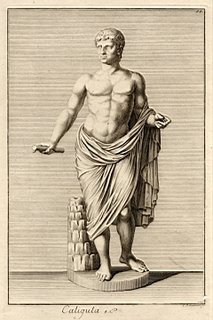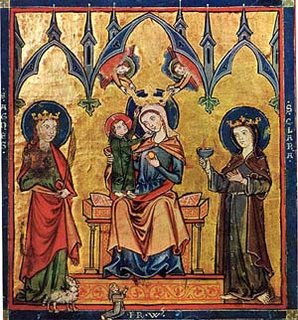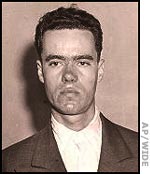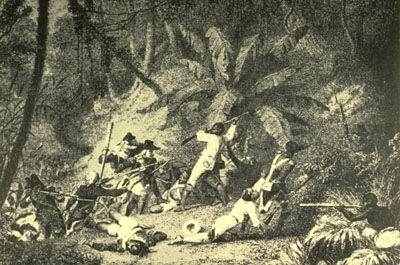January 31
 American Private Eddie Slovik was shot for desertion on this date in 1945. He had abandoned the 109th Infantry Regimen, 28th Infantry Division in October 1944, just two months after arriving in France. Because of his record of petty criminality as a youth in Detroit, Slovik was originally declared unfit for military service in 1942. As the meat-grinder of war proceeded, however, his classification was changed and Eddie Slovik was declared fit for duty in 1944. Slovik was despondent during basic training and announced his intent to “run away” from his assignment, believing that he would spend at most a few months in prison. Instead, a nine-man jury convicted him of violating the 58th Article of War in November 1944 and sentenced him to death by firing squad.
American Private Eddie Slovik was shot for desertion on this date in 1945. He had abandoned the 109th Infantry Regimen, 28th Infantry Division in October 1944, just two months after arriving in France. Because of his record of petty criminality as a youth in Detroit, Slovik was originally declared unfit for military service in 1942. As the meat-grinder of war proceeded, however, his classification was changed and Eddie Slovik was declared fit for duty in 1944. Slovik was despondent during basic training and announced his intent to “run away” from his assignment, believing that he would spend at most a few months in prison. Instead, a nine-man jury convicted him of violating the 58th Article of War in November 1944 and sentenced him to death by firing squad.Slovik appealed to General Dwight David Eisenhower for clemency but was denied two days before Christmas; desertion had become a problem among US soldiers, and the General was eager to set a deterrent example. Sixty-two years ago today, Eddie Slovik's sentence was carried out near the French village of Ste Marie aux Mines. Of the 49 American deserters sentenced to die during the war, Slovik’s sentence was the only one not commuted. In addition to Pvt. Slovik, 21,048 American soldiers deserted their units during World War II.
Just before he was shot, Slovik was urged by one of his executioners "take it easy, Eddie. Try to make it easy on yourself -- and on us."
"Don't worry about me," Slovik responded. "I'm okay. They're not shooting me for deserting the United Stated Army -- thousands of guys have done that. They're shooting me for bread I stole when I was 12 years old."
In the last letter he ever wrote, Slovik mused to his wife that “Everything happens to me. I've never had a streak of luck in my life. The only luck I had in my life was when I married you. I knew it wouldn't last because I was too happy. I knew they would not let me be happy.”
Antoinette Slovik had never actually been told that her husband was to be shot. The army insisted afterward that the young private should have told her himself. Riven with grief and anger, Antoinette struggled to clear her husband’s name until her own death in 1979. She asked seven American presidents -- including Dwight Eisenhower -- to issue her husband a pardon. All refused.
Labels: death penalty, World War II




















